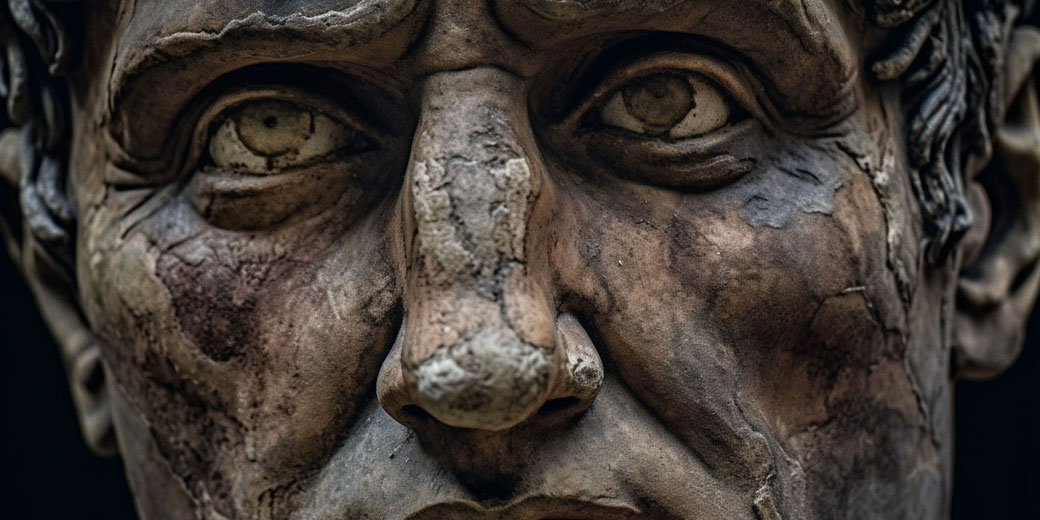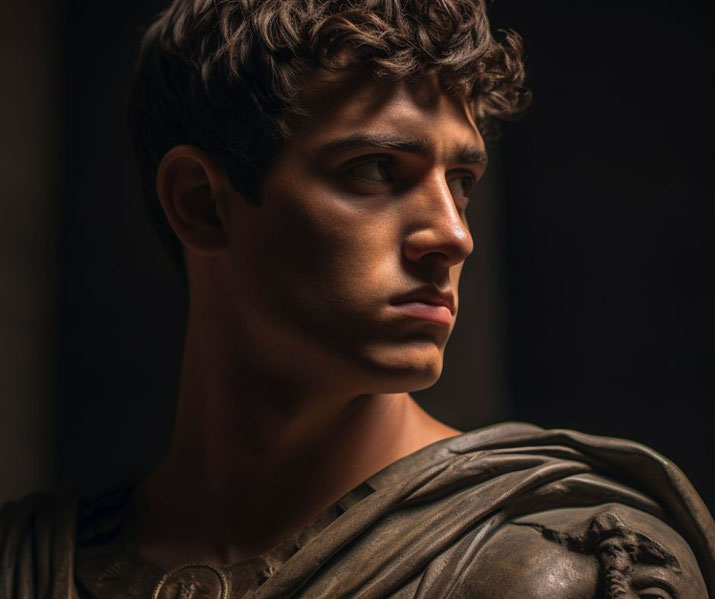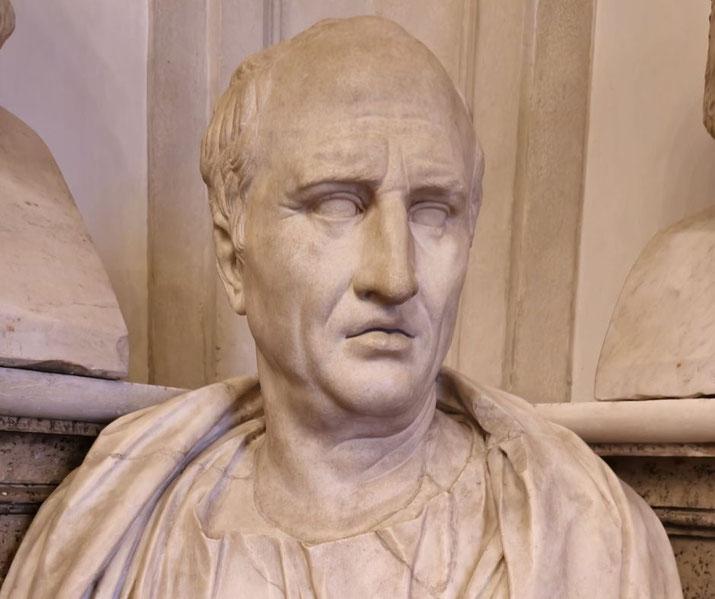The Catiline Conspiracy: The most famous failed attempt to overthrow Rome

In the final decades of the Roman Republic, a shadowy plot threatened to topple the very pillars of the Rome's power structure.
Lucius Sergius Catilina, a senator with ambitions that reached beyond the confines of the Senate house, hatched a plan so audacious that its revelation sent shockwaves throughout the city.
But who was this figure at the center of the conspiracy?
What drove him to challenge the might of Rome?
And how did the eloquent Cicero, Rome's famed orator, play a pivotal role in unearthing this treacherous scheme?
What were the causes of the Catiline Conspiracy?
The late Roman Republic, specifically around the 1st century BCE, was a period rife with political unrest, economic disparity, and social upheaval.
The Republic had expanded its territories significantly, and with this expansion came both wealth and challenges.
The political landscape was dominated by a few elite families, and the Senate, which was supposed to be the guardian of the Republic's values, often became a battleground for personal ambitions and vendettas.
Lucius Sergius Catilina, commonly known as Catiline, was born around 108 BCE into a patrician family that had seen better days.
His early life was marked by scandal and violence. By the time he reached his 40s, he had been charged with murder, adultery, and other crimes, though he managed to avoid conviction each time.
Politically, he was a populist, aligning himself with the cause of Rome's indebted and dispossessed.
He sought the consulship, the highest elected office in the Roman Republic, multiple times but was repeatedly thwarted.
By 63 BCE, Rome was in the grip of a financial crisis. Debt was widespread, and many of the Roman elite were deeply affected. Catiline saw this as an opportunity.
He proposed radical reforms, including the cancellation of debts, which garnered him a significant following, especially among the young, indebted nobility and veterans awaiting land distributions.
However, his proposals were met with resistance from the Senate, and his repeated failures to secure the consulship left him frustrated and desperate.

What was the Catiline Conspiracy?
As the political climate in Rome grew increasingly tense, Catiline's ambitions became bolder.
His initial plan was to secure the consulship legally, using it as a platform to implement his proposed reforms.
However, after facing repeated rejections, his strategies took a darker turn. He began to gather a group of disgruntled and disenfranchised individuals, many of whom had personal grievances against the Roman state or were burdened by debts.
Among these were Gaius Cornelius Lentulus Sura, a former consul, and Publius Cornelius Lentulus Spinther, both of whom saw in Catiline's plot a chance to regain their lost prestige.
Additionally, figures like Gaius Cethegus and Lucius Cassius Longinus, known for their violent tendencies, joined the conspiracy, further solidifying its dangerous potential.
The conspirators aimed to assassinate key senators, including the consul Cicero, and ignite a widespread uprising.
Outside the city, Catiline sought alliances with various disaffected groups. One such group was the Allobroges, a Gallic tribe that had grievances against the Roman state.
Catiline hoped that with their support, and that of other discontented groups, he could raise a formidable army to march on Rome.
However, the conspiracy began to unravel when the Allobroges, perhaps sensing the danger of aligning against Rome or seeing an opportunity to gain favor, decided to betray Catiline.
How was Catiline's plot uncovered?
The conspiracy's exposure was a masterclass in political maneuvering and intelligence gathering.
Cicero, ever the astute statesman, had been suspicious of Catiline's activities for some time.
His network of informants and spies within Rome kept him apprised of the whispers and rumors circulating in the city's darker corners.
However, it was the betrayal by the Allobroges that provided the concrete evidence he needed.
The Gallic tribe, initially approached by the conspirators to join their cause, chose instead to align with the established power of Rome.
They handed over to Cicero the letters that detailed the conspiracy's plans and named its participants.
With this damning evidence in hand, Cicero wasted no time. He convened the Senate and, in a series of orations that would become legendary, laid bare the full extent of the plot.
These speeches, known as the "Catilinarian Orations," not only exposed the conspiracy but also galvanized the Senate into action.
The weight of Cicero's words and the undeniable proof he presented left little room for doubt or debate.
The Senate swiftly issued the "Senatus consultum ultimum," a decree that granted Cicero sweeping powers to safeguard the Republic.
This was a rare and drastic measure, underscoring the perceived threat posed by Catiline and his followers.
With this authority, Cicero moved against the conspirators still in Rome. Several, including Lentulus Sura and Cethegus, were arrested.
In a contentious decision, and without a formal trial, they were executed, a move that would later come back to haunt Cicero.

Catiline's dramatic last stand
As the conspiracy was laid bare in the heart of Rome, Catiline found himself in the rugged terrains of Etruria, rallying his forces for a confrontation he hoped would change the course of Roman history.
His army was a motley crew, consisting of disaffected nobles, veterans longing for the glory of past wars, and those burdened by debts.
Despite their diverse backgrounds, they were united by a shared sense of desperation and the hope that a victory could overturn their fortunes.
In January 62 BCE, the final confrontation between Catiline's forces and the Roman army took place near Pistoria, a town in northern Italy.
The Roman forces were led by Gaius Antonius Hybrida, Cicero's co-consul and a man who had once been sympathetic to Catiline's cause but had since switched allegiances.
The battle was fierce, with both sides displaying tenacity and courage. However, the disciplined legions of Rome, trained in the art of warfare and backed by the vast resources of the Republic, held a distinct advantage.
Catiline, ever the warrior, fought with the ferocity of a man with nothing left to lose.
He and his men resisted valiantly, but as the day wore on, the superior tactics and numbers of the Roman legions began to tell.
By the battle's end, Catiline's forces were decimated. Catiline himself was found dead on the battlefield, surrounded by the bodies of his enemies, a testament to his determination to fight to the very end.

The impact on the Roman state
The dust had barely settled on the battlefield near Pistoria when the repercussions of the Catiline Conspiracy began to ripple through Rome.
The immediate threat had been neutralized, but the events had exposed the deep fissures in the Roman political and social landscape.
The conspiracy, with its roots in economic disparity, political corruption, and personal ambition, served as a stark reminder of the challenges the Republic faced.
Cicero, having played a pivotal role in uncovering and thwarting the conspiracy, initially basked in the glory of his achievements.
He was hailed as the "savior of the Republic" and enjoyed immense popularity.
However, the manner in which he dealt with the conspirators, especially the execution of Roman citizens without a trial, became a point of contention.
Over time, his political enemies, including Julius Caesar and Publius Clodius Pulcher, used this decision to attack and undermine him.
Cicero's influence waned, and he found himself exiled from Rome in 58 BCE, a stark turn of fortunes for the once-celebrated orator.
For the Roman Republic, the conspiracy underscored the need for reforms. The socio-economic issues that had driven many to support Catiline's cause remained unresolved.
The Senate's power and influence were increasingly challenged by populist leaders like Caesar, who championed the cause of the plebeians and sought to address some of the systemic issues plaguing the state.
The Republic's institutions, though resilient, were showing signs of strain.
The many unanswered questions about the plot
The Catiline Conspiracy, while a well-documented event in Roman history, has not been without its share of controversies and debates among historians.
One of the primary sources of information about the conspiracy is Cicero himself, through his Catilinarian Orations.
However, relying on Cicero's account presents challenges. As a key player in the events, Cicero had personal stakes and biases, leading some historians to question the objectivity of his narrative.
Was Catiline truly the villain Cicero painted him to be, or was he a victim of political propaganda?
Another significant source is the historian Sallust, who wrote "The Conspiracy of Catiline."
While Sallust provides a detailed account, he too had his biases, having been a supporter of Caesar and critical of the senatorial class.
His portrayal of Catiline and the conspirators is complex, sometimes painting them as victims of a corrupt system, while at other times highlighting their treachery.
The question arises: How much of Sallust's account was influenced by his own political leanings?
Lastly, the true extent and reach of the conspiracy remain subjects of speculation.
Was it truly a widespread movement with support across Italy, or was it a more localized plot blown out of proportion by Cicero and other contemporary sources?
The Catiline Conspiracy, with its blend of political intrigue, personal ambition, and societal unrest, offers a rich ground for exploration, analysis, and discussion, reminding us of the complexities inherent in understanding history.
What do you need help with?
Download ready-to-use digital learning resources
Copyright © History Skills 2014-2024.
Contact via email
With the exception of links to external sites, some historical sources and extracts from specific publications, all content on this website is copyrighted by History Skills. This content may not be copied, republished or redistributed without written permission from the website creator. Please use the Contact page to obtain relevant permission.





